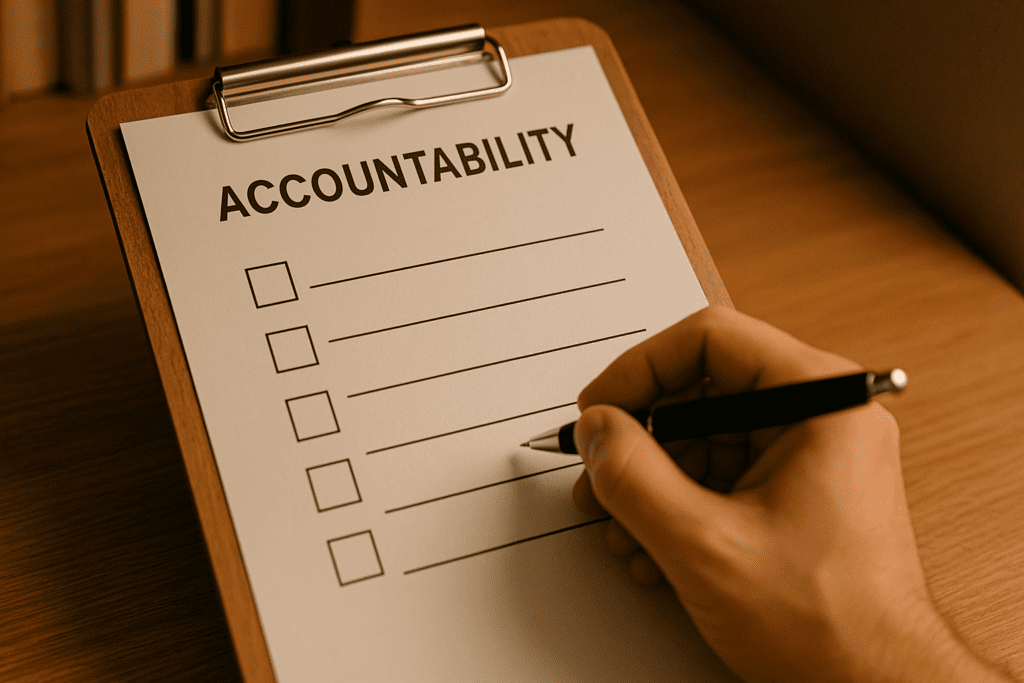Understanding how to foster personal growth through psychological tools is becoming increasingly important in today’s high-pressure world. One of the most effective and widely respected methods in modern psychology is Cognitive Behavioral Therapy (CBT). Among its many techniques, those centered around accountability and responsibility have gained attention for their powerful role in developing mental resilience and long-term emotional stability. This article delves deeply into how a specific CBT technique for accountability and responsibility can empower individuals to transform their mental well-being, strengthen their coping mechanisms, and build the inner fortitude necessary for lasting personal growth.
You may also like: How Does CBT Work to Improve Relationships and Communication? Science-Backed Techniques for Getting Along with Others
The Foundations of CBT: More Than Just a Therapeutic Model
Cognitive Behavioral Therapy is grounded in the premise that our thoughts, emotions, and behaviors are interconnected. When individuals learn to identify and change unhelpful thought patterns, they can alter emotional responses and behavioral outcomes. Originally developed to treat depression, CBT has expanded its reach to include anxiety disorders, post-traumatic stress, obsessive-compulsive behaviors, and more. It is not only clinically validated but also highly adaptable, making it suitable for self-help strategies and structured therapy alike.
A central feature of CBT is its focus on practical techniques. These tools aim to help individuals recognize distorted thinking, reframe negative thoughts, and replace counterproductive behaviors with healthier alternatives. Among these is a particularly transformative method: the CBT technique for accountability and responsibility. This technique encourages individuals to move away from blame, denial, or passive coping and instead adopt a mindset of personal agency and growth-oriented reflection.
Defining Accountability and Responsibility in a CBT Framework
While responsibility refers to the obligation to take charge of one’s actions, accountability adds an extra dimension—willingness to be answerable for those actions and their outcomes. Within CBT, this distinction is crucial. The CBT technique for responsibility involves recognizing the connection between one’s choices and resulting consequences, while the CBT technique for accountability and responsibility pushes this further by inviting introspection, honest evaluation, and behavioral adaptation.
Unlike punitive models that equate accountability with guilt or shame, CBT emphasizes constructive learning. Individuals are guided to examine how their thoughts and behaviors contributed to a given situation without falling into cycles of self-blame. This balance fosters insight and empowers change. For instance, rather than berating oneself for procrastinating on a project, the CBT approach would examine the underlying beliefs and behavioral reinforcements that led to the procrastination, thereby allowing for targeted adjustments in future behavior.
Why Accountability-Based CBT Builds Mental Resilience
Resilience refers to the ability to adapt to adversity, recover from setbacks, and continue moving forward with purpose. The CBT technique for accountability and responsibility directly nurtures resilience by promoting emotional regulation, self-awareness, and proactive coping. When individuals take ownership of their reactions rather than externalizing blame, they are more equipped to face challenges with clarity and composure.
Moreover, this technique helps reduce the cognitive distortions that often accompany anxiety and depression. Catastrophizing, black-and-white thinking, and personalization can be moderated by accountability work. For example, a person struggling with social anxiety might believe, “I always mess up conversations.” Through CBT, they would be guided to examine this belief, identify its inaccuracies, and take responsibility for the specific aspects within their control—such as practicing active listening or challenging avoidance behaviors.
This shift in mindset leads to stronger internal coping resources. Over time, individuals become less reliant on external validation or circumstances and more anchored in their ability to manage life’s ups and downs through deliberate, informed action.
Rewiring the Brain: Neuroplasticity and the Role of Repetition
An essential component of CBT’s effectiveness lies in its relationship with neuroplasticity—the brain’s ability to reorganize itself by forming new neural connections. Repeated use of the CBT technique for responsibility trains the brain to default to constructive thought patterns rather than reactive, self-defeating ones.
For instance, if someone regularly practices taking accountability for emotional reactions—such as anger during conflict—they begin to reduce impulsivity and strengthen their prefrontal cortex, which governs executive function and emotional regulation. These neurological changes do not happen overnight but develop gradually through consistent effort. This neurological foundation gives scientific credibility to CBT and explains why it fosters durable psychological transformation.
Breaking the Cycle of Learned Helplessness
One of the most debilitating cognitive patterns is learned helplessness—the belief that one has no control over outcomes, often rooted in past experiences of failure or trauma. The CBT technique for accountability and responsibility offers a pathway out of this mindset. By gradually reinforcing the idea that actions have consequences, and that change is possible through intentional behavior, individuals reclaim a sense of agency.
Take the example of someone who has repeatedly failed to meet health goals and now believes they “just can’t stick to anything.” A CBT-oriented intervention would guide them to analyze past attempts, separate what was within their control from what wasn’t, and create an actionable plan based on realistic, measurable goals. The technique doesn’t ask for perfection—it asks for presence, reflection, and responsibility. These incremental wins help rebuild trust in oneself, thereby weakening the grip of helplessness and reinforcing the belief in one’s capacity for growth.

Shifting from External to Internal Locus of Control
The locus of control is a psychological concept that describes how individuals attribute causes to life events. Those with an external locus tend to believe that outcomes are determined by luck, fate, or other people, whereas an internal locus reflects the belief that one’s actions significantly shape results. While life includes uncontrollable factors, an overreliance on external attribution can undermine motivation and increase susceptibility to stress.
The CBT technique for accountability and responsibility systematically cultivates an internal locus of control. Through structured reflection, individuals are encouraged to explore how their thoughts, beliefs, and actions influenced past situations. This doesn’t mean ignoring systemic or environmental factors, but rather empowering individuals to identify the personal leverage they do have. As people begin to see themselves as active participants rather than passive recipients of their circumstances, their confidence and resilience naturally increase.
Building Emotional Intelligence Through Accountability Work
Emotional intelligence—the capacity to recognize, understand, and manage emotions—is essential for psychological well-being. Practicing the CBT technique for responsibility enhances emotional intelligence by requiring individuals to sit with discomfort, analyze emotional responses, and derive insight from them rather than react impulsively.
For example, someone who reacts with defensiveness during feedback might learn, through CBT work, to recognize the shame or fear underlying that reaction. Instead of deflecting blame, they would learn to acknowledge the emotion, assess its origin, and choose a more constructive response. This emotional literacy not only improves personal relationships but also strengthens one’s sense of identity and self-efficacy.
The Role of Self-Compassion in Accountability-Based CBT
A common misconception is that holding oneself accountable requires harsh self-criticism. In reality, the CBT technique for accountability and responsibility is most effective when paired with self-compassion. This balance ensures that individuals remain motivated to change without becoming emotionally overwhelmed.
Research in positive psychology underscores the importance of self-compassion in promoting sustained behavior change. When individuals approach their shortcomings with curiosity rather than judgment, they are more likely to learn from mistakes and persist through challenges. CBT interventions often incorporate compassionate self-talk, journaling exercises, and mindfulness techniques to reinforce this supportive internal environment. The result is a person who can face their flaws honestly while remaining committed to growth.
Practical Applications in Everyday Life
The beauty of the CBT technique for responsibility is that it can be practiced outside of formal therapy. In everyday situations, individuals can pause to ask reflective questions: What part did I play in this outcome? What assumptions influenced my behavior? What can I do differently next time? These moments of self-inquiry act as micro-interventions that gradually rewire cognitive and emotional patterns.
In workplace settings, this technique fosters professionalism and collaboration. Employees who take responsibility for errors rather than deflecting blame contribute to a culture of trust and innovation. In parenting, modeling accountability helps children develop their own emotional regulation and moral reasoning skills. Even in romantic relationships, shifting from defensiveness to ownership can de-escalate conflict and strengthen bonds.
Integrating Accountability into Long-Term Mental Wellness Plans
Mental health is not static—it evolves through daily choices, habits, and mindset shifts. Incorporating the CBT technique for accountability and responsibility into a long-term wellness plan means consistently engaging in reflective practices, setting intentional goals, and reviewing outcomes with honesty and openness. Journaling, therapy sessions, self-monitoring apps, and mindfulness routines can all support this integration.
Therapists often recommend tracking patterns over time to identify triggers, behavioral tendencies, and progress markers. This data-driven approach enhances self-awareness and reinforces motivation. Moreover, as individuals witness the positive outcomes of owning their decisions—such as improved relationships, career growth, or emotional stability—the practice of accountability becomes not just a therapeutic tool but a way of life.
Bridging the Gap Between Insight and Action
Insight without action has limited utility. One of the reasons the CBT technique for accountability and responsibility is so transformative is its emphasis on actionable change. After identifying a problematic belief or behavior, individuals are encouraged to develop and implement a specific, achievable plan. This might involve setting boundaries, communicating differently, altering routines, or practicing new thought patterns.
This bridge between insight and action builds psychological momentum. It reinforces the belief that change is possible and fosters a sense of achievement that boosts self-esteem. Over time, these small steps accumulate into profound transformation, reshaping not just behaviors but also identity. A person once plagued by avoidance or defeatism may come to see themselves as capable, resilient, and growth-oriented.
A Path Toward Empowered Living
Empowerment is not just a buzzword—it is a psychological state characterized by clarity, confidence, and agency. The CBT technique for accountability and responsibility aligns perfectly with this ethos. By encouraging individuals to take ownership of their thoughts and actions, it cultivates a mindset of intentional living. This doesn’t mean ignoring pain, failure, or uncertainty, but rather facing them with courage and a clear sense of self.
This empowered approach becomes particularly valuable during times of crisis or transition. Whether navigating a job loss, relationship ending, or health scare, those who have practiced accountability are better equipped to respond constructively. They are less likely to collapse into despair or lash out impulsively and more likely to engage in thoughtful problem-solving and emotional processing.

Frequently Asked Questions: CBT Technique for Accountability and Responsibility
1. How does the CBT technique for accountability and responsibility differ from traditional goal-setting approaches?
Traditional goal-setting often emphasizes outcome-oriented targets, but it doesn’t always equip individuals with the tools to manage emotional roadblocks along the way. In contrast, the CBT technique for accountability and responsibility helps individuals evaluate the cognitive and behavioral patterns that may interfere with achieving those goals. Instead of simply defining what needs to be done, it cultivates a mindset that asks, “What thoughts are holding me back, and how can I change them?” This allows for more sustainable, internally motivated progress. The technique also reinforces self-monitoring, which provides clarity and structure in times of emotional ambiguity.
2. Can the CBT technique for responsibility help in managing chronic procrastination?
Yes, chronic procrastination often stems from avoidance-based thinking, low self-efficacy, or perfectionist beliefs—all of which are ideal targets for intervention using the CBT technique for responsibility. This approach teaches individuals to dissect their internal narratives, such as “I’ll fail anyway” or “I need the perfect time to start,” and replace them with more balanced, actionable thoughts. By linking accountability with self-reflection rather than self-criticism, people learn to face tasks with clarity and purpose. Over time, this builds trust in one’s ability to begin, follow through, and tolerate discomfort. Importantly, it moves procrastination from being a character flaw to a changeable behavior rooted in cognitive processes.
3. What role does the CBT technique for accountability and responsibility play in workplace leadership development?
In leadership training, accountability is often viewed externally—delivering results, managing teams, or reporting performance. However, the CBT technique for accountability and responsibility brings a deeper internal focus, helping leaders develop emotional intelligence, impulse control, and strategic self-assessment. Leaders who utilize this technique become more effective because they’re not just reactive—they’re proactive in examining how their own beliefs and emotional responses affect team dynamics. It also helps them model responsible behavior, which can influence organizational culture. This internalization of responsibility leads to transparent communication and better conflict resolution across hierarchical levels.
4. How can this technique be applied to repair damaged personal relationships?
The CBT technique for responsibility encourages individuals to step away from blame-focused thinking and toward constructive ownership of their behaviors. In relationships, this shift allows for more honest and empathetic dialogue. Instead of saying, “You made me angry,” someone practicing this method might say, “I felt triggered by what you said, and I responded poorly.” This reframing helps diffuse defensiveness and fosters a solution-focused mindset. It doesn’t mean taking responsibility for others’ actions, but it does promote introspection about one’s own role in conflicts. This is especially powerful in rebuilding trust and promoting emotional safety.
5. Are there any emerging digital tools that support the CBT technique for responsibility?
Yes, several cognitive-behavioral therapy apps are beginning to incorporate tools specifically designed to support accountability-based self-reflection. Features such as thought logs, behavioral tracking, and mood journals allow users to record patterns and outcomes in real time. Some platforms now include AI-driven feedback that prompts users with guided questions tailored to the CBT technique for accountability and responsibility. These innovations make the technique more accessible and reduce barriers to consistency. As the field of digital mental health expands, we’re likely to see even more tailored interfaces that align with CBT’s structure and goals.
6. How does cultural context influence the effectiveness of the CBT technique for accountability and responsibility?
Cultural values around responsibility, self-expression, and emotional disclosure significantly shape how this CBT technique is received and applied. In collectivist cultures, accountability may be seen more in relational or family-centered terms, requiring adaptations that align personal responsibility with social harmony. Conversely, in individualist cultures, the focus might lean more heavily on personal agency and self-determination. Effective therapists must consider these nuances and modify the CBT technique for responsibility to ensure it resonates culturally. Doing so not only increases engagement but also respects the individual’s value system without compromising the technique’s integrity.
7. What makes the CBT technique for accountability and responsibility sustainable over the long term?
Sustainability comes from the way this technique integrates seamlessly into everyday reflection and behavior. Rather than relying on temporary motivation, the CBT technique for accountability and responsibility builds internal mechanisms for self-correction and resilience. Its emphasis on pattern recognition encourages users to develop a “self-coaching” mindset, in which they can navigate setbacks without spiraling. This fosters a sense of psychological self-reliance, making relapse into old patterns less likely. Additionally, because the technique encourages adaptive thinking, it evolves with the individual’s life circumstances, remaining relevant across different seasons of growth.
8. Can the CBT technique for responsibility help people who struggle with emotional impulsivity?
Absolutely. Emotional impulsivity often stems from automatic, unexamined thought patterns that trigger knee-jerk reactions. The CBT technique for responsibility trains individuals to insert a reflective pause between stimulus and response. This pause is crucial because it provides space to evaluate one’s beliefs, emotional cues, and likely outcomes before acting. Over time, this helps individuals replace impulsive behavior with intentional, values-aligned responses. Emotional regulation, in this sense, becomes a byproduct of disciplined cognitive restructuring and the internalization of accountability.
9. How does this CBT technique interact with mindfulness and meditation practices?
Mindfulness complements the CBT technique for accountability and responsibility by creating the cognitive spaciousness necessary for reflection. While mindfulness brings awareness to present-moment experiences, CBT guides what to do with that awareness. Together, they form a powerful synergy: mindfulness observes the emotional wave; CBT surfs it with strategy. For example, a mindful breath might help someone notice rising frustration, while the CBT technique for responsibility helps them explore the belief behind that frustration and decide how to act. Integrating both approaches can deepen self-awareness and promote emotionally intelligent behavior.
10. What are the most common mistakes people make when first applying this technique?
One common pitfall is confusing responsibility with guilt, which can lead to internalized shame rather than constructive change. Another mistake is trying to rush the process—effective use of the CBT technique for accountability and responsibility requires patience, practice, and honest self-inquiry. People may also focus too much on outcomes rather than progress, overlooking the value of small mindset shifts. Additionally, it’s easy to fall into the trap of self-monitoring without actionable follow-through, which can become emotionally draining. To counter this, it helps to pair accountability with specific, compassionate behavior plans and regular review checkpoints.

Conclusion: Why Practicing Accountability-Based CBT Is a Long-Term Investment in Mental Strength
As modern life becomes increasingly complex and emotionally demanding, the need for internal anchors becomes even more critical. The CBT technique for accountability and responsibility offers such an anchor—a psychologically sound, evidence-based method for fostering resilience, emotional intelligence, and personal growth. Unlike fleeting motivational advice or rigid self-help rules, this approach is grounded in real-world applicability and backed by scientific insight.
By integrating this technique into daily life, individuals can shift from passive coping to empowered engagement. They learn to face challenges not with avoidance or blame but with clarity and confidence. In doing so, they build a reservoir of mental strength that supports them through every stage of life. For anyone seeking a sustainable path toward self-improvement, mental well-being, and empowered living, practicing the CBT technique for responsibility is not merely beneficial—it is transformative.
personal accountability therapy, responsibility in mental health, resilience building techniques, cognitive reframing exercises, emotional regulation strategies, self-awareness practices, psychological flexibility, proactive coping methods, mental strength training, behavioral change therapy, self-reflection tools, emotional intelligence development, internal locus of control, mindset transformation techniques, goal setting psychology, overcoming self-sabotage, introspective therapy methods, sustainable mental wellness, adaptive thinking skills, therapeutic personal growth
Further Reading:
How Cognitive Behavioral Therapy (CBT) Supports Resilience
A Provider’s Guide to Brief Cognitive Behavioral Therapy
Resilience Theory: A Summary of the Research
Disclaimer
The information contained in this article is provided for general informational purposes only and is not intended to serve as medical, legal, or professional advice. While Health11News strives to present accurate, up-to-date, and reliable content, no warranty or guarantee, expressed or implied, is made regarding the completeness, accuracy, or adequacy of the information provided. Readers are strongly advised to seek the guidance of a qualified healthcare provider or other relevant professionals before acting on any information contained in this article. Health11News, its authors, editors, and contributors expressly disclaim any liability for any damages, losses, or consequences arising directly or indirectly from the use, interpretation, or reliance on any information presented herein. The views and opinions expressed in this article are those of the author(s) and do not necessarily reflect the official policies or positions of Health11News.


